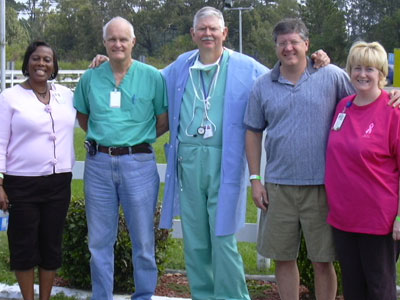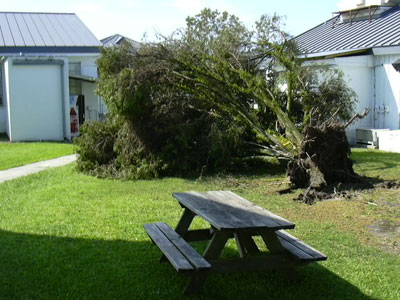
Few figures say more about the LSU HCSD safety net after the storm than the 24 percent of the cancer patients with New Orleans’ addresses at the Lallie Kemp Regional Medical Center (LKRMC). Hurricane Katrina tested the durability of this net, but found that it remained firmly in place, and, in the days and weeks after Katrina, it strengthened.
The LKRMC Oncology Program is testament to this strength. LKRMC reinstated the program in March 2005. A year later, the program doubled in size in response to the storm’s dislocation of services and population.
LKRMC also tripled the amount of space it devotes to chemotherapy treatment and added new reclining chairs for infusion patients. The area has its own private entrance for cancer patients—an essential accommodation that decreases the risk of infection in this immunocompromised population.
Ever vigilant, the oncology staff scanned the medical history and treatment records of patients onto electronic flash drives so that patients can carry their records and resume treatment wherever they are if another evacuation occurs. In the wake of Katrina, LKRMC recognized the need of LSU HCSD patients for treatment and swiftly provided it.
Like other LSU hospitals, LKRMC quickly adapted to the evolving needs of healthcare education in LSU HCSD. The LKRMC Ophthalmology Clinic expanded to five days a week with the availability of surgery and LSU faculty and residents, who arrived immediately after Katrina. The LKRMC administration saw the need for the continuation of this specialty education and for the opportunity for additional healthcare for its community. The LSU residency program in ophthalmology is now a permanent part of LKRMC.

Immediately after Katrina, LKRMC responded to the needs of the community. Despite temperature in LKRMC reaching 100 degrees due to a four-day loss of power, the medical center remained open. Working from back-up generators, staff used portable fans to cool patients and portable air conditioning units for patients in critical care areas. Patient care and comfort remained foremost for staff, regardless of the circumstances.
The nearest special needs shelter was sixty miles away, but the nationwide Katrina-fueled gas shortage curtailed travel. Therefore, LKRMC accepted those on ventilators or oxygen; gave services, shelter, and food to them and their families; and distributed oxygen cylinders to the housebound in the community. Without question, LKRMC breathed life into those struggling to maintain it.
The LKRMC Pharmacy also opened immediately for outpatient services and provided free medicine of all sorts until early 2006. It filled approximately 5,000 prescriptions. In many instances, the pharmacy provided to outpatients, residents, and those who fled the New Orleans area life-sustaining medicines when they were not available anywhere else.
Turning lemons into lemonade, Tangipahoa Parish School Food Services donated to LKRMC more than three and a half tons of frozen food after a school cafeteria lost power. LKRMC in turn fed patients, their families, and employees. Beyond fulfilling its role as healer, LKRMC offered a helping hand to its community and those seeking refuge with the grace that has always exemplified its place in the region.